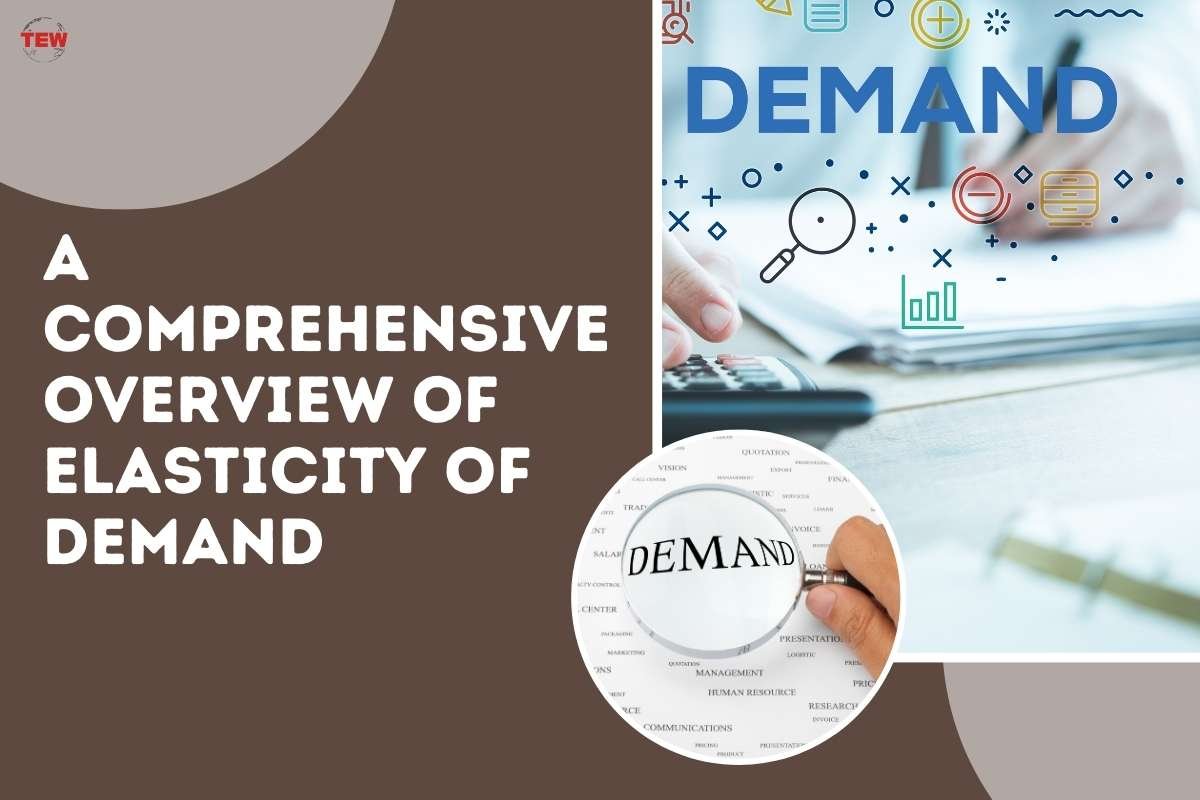In the field of economics, the concept of elasticity of demand plays a fundamental role in understanding consumer behavior, pricing strategies, and market dynamics. In this comprehensive article, we delve into the intricacies of the elasticity of demand, its significance, determinants, types, and real-world applications. It refers to the degree of responsiveness or sensitivity of quantity demanded to changes in price, income, or other factors influencing consumer behavior. It measures how the quantity demanded of a good or service changes in response to changes in its price, holding other factors constant.
Significance:
It is crucial for various stakeholders, including businesses, policymakers, and economists, due to its significance in the following areas:
Price Determination:
It helps businesses set optimal prices for their products or services by assessing how price changes affect consumer demand. It enables firms to maximize revenue and profitability by pricing products according to their price elasticity.
Revenue Management:
Knowledge of demand elasticity allows businesses to implement revenue management strategies, such as dynamic pricing and price discrimination, to capture consumer surplus and optimize revenue generation.
Policy Formulation:
Policymakers use the demand for electricity to design and evaluate economic policies, such as taxation, subsidies, and regulations, to achieve desired outcomes, such as reducing the consumption of harmful goods or promoting the consumption of essential goods.
Market Analysis:
Electricity demand provides insights into market dynamics, competitive positioning, and consumer preferences, helping firms identify opportunities for market expansion, product differentiation, and strategic growth.
Determinants of Electricity Demands:

Several factors influence the elasticity of demand for a particular good or service. Some of the key determinants include:
Substitutability:
The availability of substitutes for a product or service affects its demand elasticity. Goods with close substitutes tend to have more elastic demand, as consumers can easily switch to alternatives in response to price changes.
Necessity vs. Luxury:
Goods that are perceived as necessities, such as food and utilities, tend to have inelastic demand because consumers are less responsive to price changes for essential items. In contrast, luxury goods often have more elastic demand as consumers can forgo them or substitute them with cheaper alternatives.
Proportion of Income:
The proportion of income spent on a good or service influences its demand elasticity. Goods that represent a small portion of consumers’ budgets tend to have inelastic demand, while goods that account for a significant portion of income tend to have more elastic demand.
Time Horizon:
The electricity demand may vary over different time horizons. In the short run, demand for certain goods may be relatively inelastic due to limited alternatives or behavioral habits. However, in the long run, consumers may have more flexibility to adjust their consumption patterns, leading to greater elasticity of demand.
Types:
It can be classified into several types, each reflecting a different aspect of consumer behavior and market dynamics:
Price Elasticity of Demand (PED): Price measures the responsiveness of quantity demanded to changes in price. It is calculated as the percentage change in quantity demanded divided by the percentage change in price.

Income Elasticity of Demand (YED): It measures the responsiveness of quantity demanded to changes in consumer income. It indicates whether a good is a normal good (positive income elasticity) or an inferior good (negative income elasticity).
Cross-Price Elasticity of Demand (XED): It measures the responsiveness of quantity demanded of one good to changes in the price of another good. It indicates whether goods are substitutes (positive cross-price elasticity) or complements (negative cross-price elasticity).
Real-World Application:
The concept of elasticity of demand has numerous real-world applications across various industries and sectors:
Pricing Strategies: Businesses determine pricing strategies, such as price discrimination, bundling, and promotional pricing, to maximize revenue and profit margins.
Taxation and Subsidies: Governments use it to design tax policies and subsidies that influence consumer behavior and market outcomes, such as taxing luxury goods or subsidizing essential services.
Product Development: Companies consider demand elasticity when developing new products or expanding product lines to meet changing consumer preferences and market demand.
Advertising and Promotion: It helps businesses allocate advertising and promotional budgets more effectively by targeting segments with higher demand elasticity and potential for revenue growth.
Advanced Concepts:

In addition to the fundamental concepts discussed above, several advanced topics and applications further enhance the understanding and application of elasticity of demand:
Price Discrimination:
It plays a crucial role in implementing price discrimination strategies, where businesses charge different prices to different customer segments based on their elasticity of demand. By segmenting customers according to their willingness to pay, firms can capture more consumer surplus and maximize profits.
Dynamic Pricing:
Dynamic pricing utilizes real-time data and elasticity estimates to adjust prices dynamically in response to changes in market conditions, demand levels, and competitor actions. Algorithms analyze demand elasticity to optimize pricing strategies and maximize revenue in dynamic market environments.
Revenue Management:
It is integral to revenue management techniques used in industries such as airlines, hotels, and entertainment. By forecasting demand elasticity for different market segments, companies can optimize pricing, inventory allocation, and capacity utilization to maximize revenue and profitability.
Strategic Decision-Making:
Businesses use this to inform strategic decisions related to product development, market expansion, and competitive positioning. Understanding demand elasticity helps companies identify opportunities for innovation, differentiation, and market segmentation to gain a competitive advantage.
Conclusion: Elasticity of Demand
In conclusion, it is a fundamental concept in economics that provides valuable insights into consumer behavior, pricing strategies, and market dynamics. By understanding how changes in price, income, and other factors affect consumer demand, businesses can make informed decisions regarding pricing, production, marketing, and resource allocation. Moreover, policymakers can use the elasticity of demand to design and implement policies that promote economic efficiency, consumer welfare, and market stability. As markets continue to evolve and consumer preferences shift, the ability to analyze and interpret elasticity of demand remains essential for businesses, policymakers, and economists alike.




